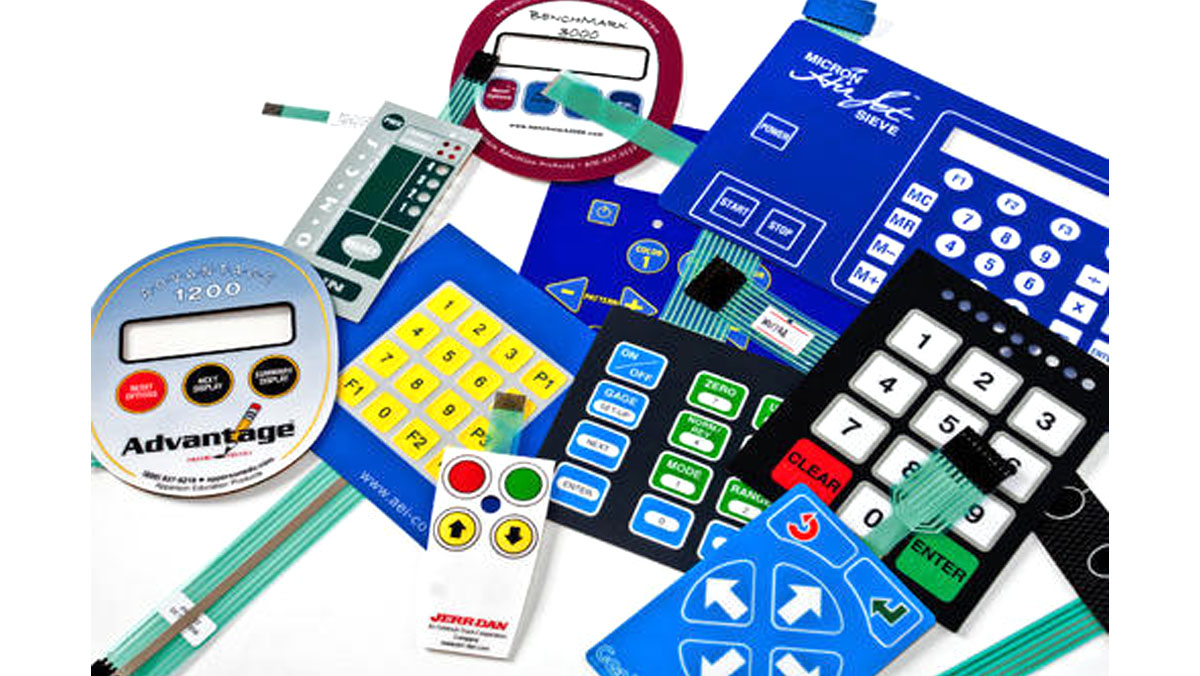The Role of Membrane Switches in Enhancing Device Functionality
The Role of Membrane Switches in Enhancing Device Functionality
Blog Article
Comprehending Membrane Switches Over: The Key to Resilient and Trusted Controls

What Are Membrane Layer Buttons?
Membrane buttons are a sophisticated option in the realm of interface modern technology, incorporating capability and style effortlessly. These gadgets offer as an interface in between customers and electronic systems, integrating several elements right into a compact layout. Generally built from versatile, slim layers of materials, membrane layer switches are made to respond to touch, making it possible for users to communicate with equipment and digital gadgets successfully.
The key components of a membrane layer switch consist of a published circuit layer, visuals overlay, and a spacer layer that prevents unexpected activation. The graphic overlay can be tailored to mirror brand name identification or individual choices, improving visual appeals while making sure functionality. Membrane buttons are commonly used in numerous applications, consisting of clinical gadgets, consumer electronic devices, and commercial tools, owing to their sturdiness and resistance to ecological factors such as moisture and dirt.
Among the essential benefits of membrane layer switches is their capacity to withstand wear and tear, making them excellent for high-traffic settings. Furthermore, they are light-weight and require marginal area, permitting for innovative designs in item advancement. Overall, membrane changes stand for a practical and reliable selection for contemporary electronic user interfaces, marrying modern technology with user-centric design concepts.
Exactly How Membrane Switches Over Job
The procedure of membrane switches hinges on an easy yet reliable device that converts customer input into electronic signals. When a customer presses the switch, the top layer warps, enabling a conductive aspect in the circuit layer to make contact with a matching conductive pad on the bottom of the visuals overlay.
The design of membrane buttons can differ, yet they often incorporate domes or tactile components to give feedback to the customer, enhancing the total experience - membrane switch. The materials used in membrane buttons, such as polyester or polycarbonate, add to their longevity and resistance to environmental elements, consisting of wetness and dirt. The published circuits are usually encapsulated, which secures them from wear and tear over time.
Benefits of Membrane Layer Buttons

Furthermore, membrane layer buttons are known for their durability. Created from durable materials, they are resistant to dirt, dampness, and physical wear, which considerably expands their lifespan compared to traditional mechanical switches. This durability makes them particularly suitable for high-traffic settings and applications needing long life.
One more substantial benefit is the simplicity of cleansing and maintenance. The smooth surface area of membrane switches minimizes dirt accumulation and is frequently impervious to spills, making them ideal for setups that need frequent sanitization.
Furthermore, membrane layer switches offer a streamlined account, resulting in a thinner style that can be integrated right into various gadgets without adding mass. This attribute not just enhances the visual allure yet additionally contributes to a more ergonomic product design.
Applications of Membrane Switches
Versatile and straightforward, membrane layer buttons discover applications across a variety of markets, including medical devices, customer electronics, and commercial equipment. In the clinical area, these buttons are essential to tools such as analysis equipment, patient surveillance systems, and infusion pumps, where reliability and convenience of cleaning are important. Their ability to maintain and withstand harsh settings functionality makes them optimal for such applications.

In consumer electronic devices, membrane layer switches are utilized in items like microwaves, cleaning machines, and remote controls - membrane switch. Their sleek design permits intuitive user interfaces, boosting the general user Your Domain Name experience while offering sturdiness and resistance to tear and put on
Commercial equipment likewise takes advantage of membrane layer switches, particularly in control panels for machinery and automation systems. These switches offer defense versus dirt and wetness, guaranteeing constant efficiency in visit here tough settings. Their adjustable attributes enable producers to customize them to specific operational needs, boosting performance and functionality.
Selecting the Right Membrane Layer Switch
When picking a membrane button, it is vital to think about numerous elements that affect efficiency and viability for details applications. The key factors to consider include environmental problems, responsive feedback, durability, and design requirements.
First, evaluate the operating environment; buttons subjected to moisture, chemicals, or severe temperatures need specific materials to make sure durability and capability. Next, review the requirement for responsive feedback. Depending upon individual interaction, some applications might profit from a tactile feedback to verify activation, while others might like a non-tactile style for aesthetic reasons.
Durability is another important variable; membrane buttons must be developed to withstand constant usage, impacts, and abrasion. Ensure the selected button can withstand the anticipated lifecycle, specifically in high-usage circumstances.

Verdict
In verdict, membrane switches over offer as crucial parts in the style of reliable and durable control systems throughout different industries. The adaptability of membrane switches permits for customized services that satisfy details functional needs, strengthening their relevance in modern-day innovation.
Membrane switches represent an essential facet of contemporary interface layout, blending performance with resilience in different applications.Membrane layer switches are an innovative remedy in the realm of customer interface technology, incorporating performance and style perfectly. Generally created from adaptable, thin layers of products, membrane layer switches are made to respond to touch, allowing customers to interact with machinery and digital tools successfully.
The style of membrane layer buttons can vary, however they commonly include domes or tactile components to give feedback to the user, enhancing the overall experience.In conclusion, membrane changes offer as anchor necessary parts in the design of long lasting and reputable control systems across different markets.
Report this page